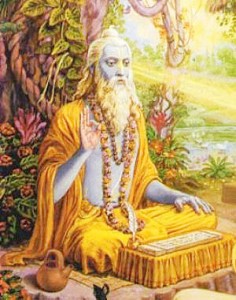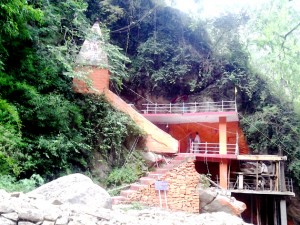 Vijay Vohra
Vijay Vohra
On every Guru Purnima I feel very sad, I just feel helpless to control
my tears. I keep remembering that sweet form with smiling face, those
Divine feet which we will never be able to touch again. But then I try
to console myself with His very words, “Pain is but an interval between
two pleasures”. So this distress too shall pass and He shall fill the
void again sooner or later. Throughout His life He cautioned us number
of times not to have body attachment.
Now we have to realize this truth that Bhagwan Sri Satya Sai Baba is not
the body, which is temporary and bound to perish one day. Real Baba is
His teachings. He is embodiment of compassion, selflessness and
goodness. If we follow His teachings, which He not only taught but also
exemplified in His life, we will have Him always with us and around us
as He used to say. He said, “God is Love, Live in Love”, “Truth is God,
God is truth”. Hence real form of Bhagwan is Love, Truth, and all His
teachings.
Let us recollect what our beloved Swami told us about this sacred day
Guru Purnima. Swami said, “This day is very sacred. This is the day on
which the first light was lit, the light that has not wavered since then
and will not falter forever, though worlds may change and eras may end
and begin again. That is the light of wisdom which destroys the night of
ignorance. And so, this is the day of eternal celebration throughout
the land of Bharat. It is the day of joy for all pious people”.
This day is also celebrated as Vyasa Purnima. Sage Vyasa was the
grandson of Maharishi Vashishta, the son of sage Parashara and the
father of famous rishi Suka. He collected the Vedas and elaborated upon
their teachings of works. He is also known as Veda Vyasa. Swami said,
“Vyasa is primal Guru of all who walk in the path of God. Vyasa planted
and nurtured the seed of theism through- the Vedas, the Mahabharata and
the Gita. He gave the world the philosophy of Divine Leela, the idea of
the basic Atma immanent everywhere and the secret of this changeful
creation. The scared literature that arose from his efforts is theism,
and so he is the universal teacher of humanity. Vyasa Purnima is
therefore the day on which man has to remember him with gratitude.”
Now, it may be asked what is the connection of this day with the life
and work of Vyasa, the sage of sages? Our beloved Swami said, “Vyasa
brought the resplendent message of the Lord to the human community
struggling in the dark, unaware of the Divine, which scattered the night
and lit the lamp of wisdom in the heart of man. It established the era
of Namaparayana (recitation of God’s name) of the upliftment of man
through constant recitation of the name of the Lord. Besides that day
was Purnima, the full moon day. On this day the mind that sails in
firmament of the heart shines in full glory, untarnished by sensory
desires and free from markings of impulse and passion. The full moon
reminds one of paramatma, full, untarnished and unblemished. Vyasa first
revealed the secret of making the mind in every one as clear and full
as the moon on full moon day”.
Who is a Guru? Modern Gurus whisper a Mantra into the ear of the
disciple and stretch their hand for money. These Gurus also give Mantra
to group of people together when they deposit money in advance. Such
people are not fit to be called Gurus.
A true Guru makes you realize the formless and attribute less Divinity.
Gurur Brahma-Gurur Vishnu
Gurur Devo Maheshwara
Guru sakshat Parm Brahma
Thasmai Sri Gurave Namah
(Guru is Brahma, Guru is Vishnu, Guru is Maheshwara, Guru is verily the
supreme Brahma). Since it is difficult to get such a Guru these days,
consider God as you Guru.
Other than God who, then can be the Guru? Not every person who
instructs, not every scholar learned in the Shastras. The Guru must
tread the path of Shastra, devoid of any trace of lust, greed or anger.
He should be full of all the traits of right conduct. Such a person
alone deserves to be accepted as a Guru. Again he should have the skill
to illumine in the disciple the flame of Jnana to dispel the darkness of
ignorance. He must avoid dragging him down into samsara by any
thoughtless words of his. The Guru will be true to his role only if he
gives the disciple the Mantra and the meaning and instructs him in the
fundamental reality. The Guru can remove the veil of ignorance that
covers the reality in a man but a “Sadguru” creates a thirst for wisdom
in his devotees.
Our Sadguru Baba said, “Guru Purnima is the day on which you desire to
worship the Guru and please him by praise. But that is not the real
significance of this day. The man is endowed with the mind. The mind can
plunge him into bondage or lead him, him to freedom. When it helps him
to attain liberation, it becomes the Guru. The mind has to shine in
serene splendor without any trail of evil.
It is to be fixed on Supreme Being alone. When that victory is gained,
that day is Guru Purnima, and the full moon of the mind, for the moon is
the deity presiding over mind. That day is Purnima in the true sense
when the mind is filled with pure love. Let your mind shine brilliantly
like the moon on the full moon day”.
We should never criticise other’s Guru. Rather we should have mutual
respect and toleration for other’s feelings and faith in different
Gurus. True Guru is one, not many. They may appear to be many but they
all derive their power from one source only, and that is God. The
devotees should have full faith in Mantra. One should have steadiness in
the discipline needed to have it and hold it even in direst distress.
Our beloved Swami said, “Many aspirants have in their anxiety to achieve
quick results sought a Guru in haste and later discovering his defects,
they are struggling and suffering, for they can neither give up the
Guru nor discard the Mantra. But persons in this condition need not
despair. Whatever sort of Guru may be, the mantra that he gave is
concerned with the Lord, is it not ? Deepen your faith in that Name,
respect it as the gift of God and proceed. Then you will forget the
defects of the Guru very soon. And those who do not come across the
right Guru need not also be dejected. Let them have a faith that God is
their Guru, their mother and their father. Adopting the name and form
that most appeals to you, practice the sadhana with pure and unselfish
intent”.
So we should not fritter away our allotted time and offer it to our
chosen name and form of God. It is the time for all of us Sai devotees
to reflect on how much Bhagwan has enriched and illumined our lives and
to repay at least a fraction of that debt by rededicating our lives to
“His Mission”.
 Gurdaspur:The gunbattle between terrorists and security forces here finally ended after 11 hours.
Gurdaspur:The gunbattle between terrorists and security forces here finally ended after 11 hours.












+.jpg)



























